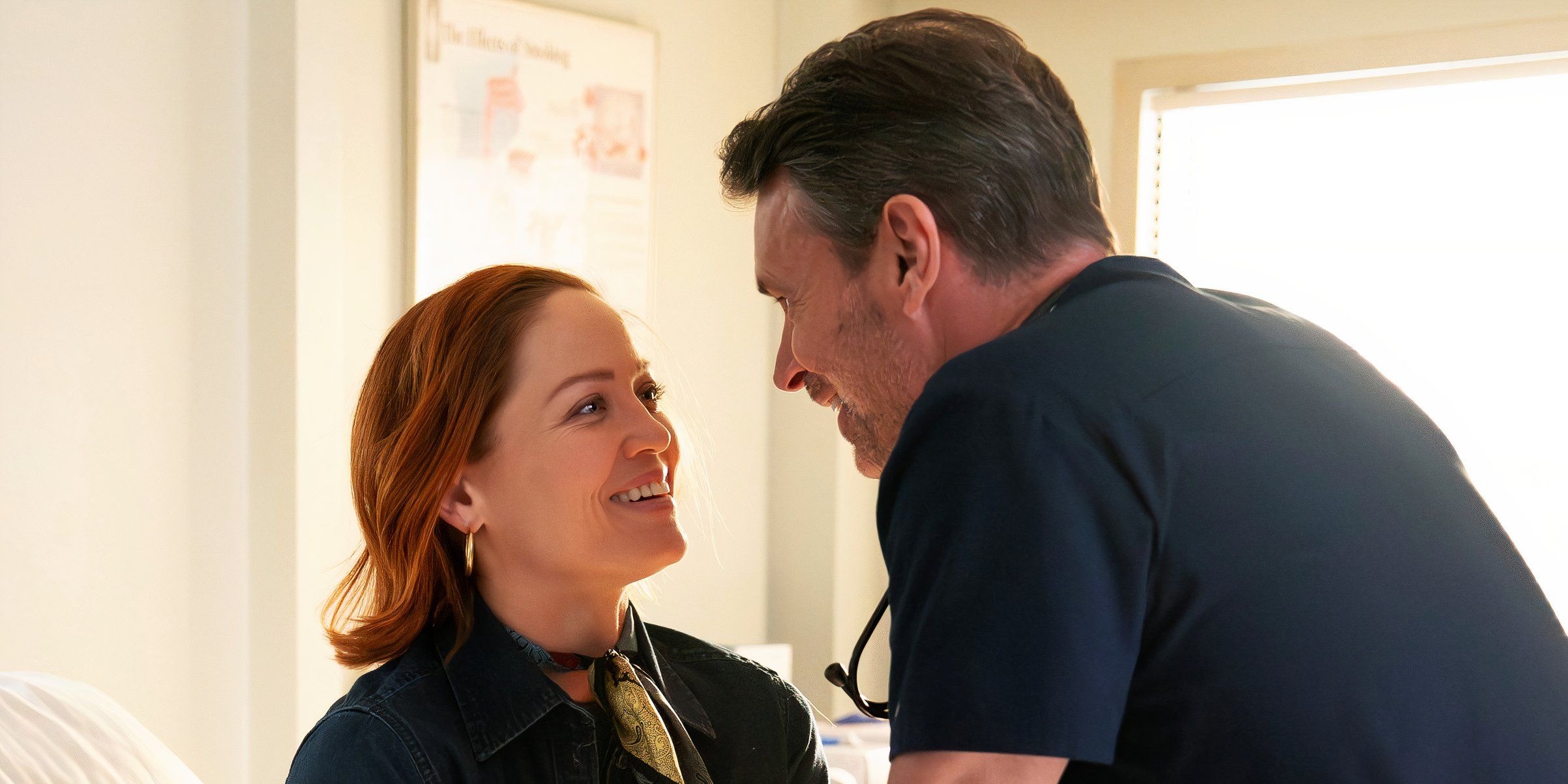
In the small, softly lit hospital room, the photograph captured a moment of silence and weight. The young woman was sitting propped up in her hospital bed, a blanket draped over her waist, her body gaunt as if she had not yet recovered from a serious illness or a violent accident.
The bruises and faint streaks of dried blood on her left cheek were not only signs of physical injury, but also tangible evidence of something more serious—mental pain. Her eyes were a mixture of resilience and doubt. Her features were tense with a moment of defense: as if she were weighing whether she could trust the man sitting before her.
The man was a doctor. He was dressed in a dark blue scrub suit, a stethoscope draped over his shoulder, his silver hair reflecting the halo of light on the white walls. His eyes were fixed on the patient, calm and concerned. In his gaze, one could read genuine sympathy.

He is not just a doctor on duty; he is someone who sits by a patient’s bedside for hours, listening to their stories that are difficult to put into words.
The distance between them is close, but also very far. On one side is the patient, carrying her doubts and hidden wounds. On the other side is the doctor, with his knowledge and compassion, trying to reach the darkest corners of her heart to help her recover.
The hospital bed is clean but cold. The half-closed blue curtains make the scene even more private, almost sacred—a place where people face their greatest fears: loss, pain, or past mistakes. In that quiet room, every word becomes more important than any consultation.
The woman gently clutches the blanket in her hands, her eyes wavering between anger and helplessness. She does not cry, but her face is evidence of the storm of emotions swirling inside. Perhaps, before coming here, she never thought she would be in this situation. And now, when all her defenses have been stripped away, the only thing she has left is the fragile hope that someone will not abandon her.
As for the doctor, he understands. He may have met hundreds, thousands of patients, but each one has left him with a unique story. His gaze seems to say: “You are not just a medical record. You are a person, and I am here for you.”
They sat across from each other in that moment—a moment without noise, without dramatic tragedy, but filled with all humanity and courage. And it is moments like this that truly decide a patient’s fight: the fight to regain health, self-respect, and belief in oneself.
